
EssaysArt & Illustrations
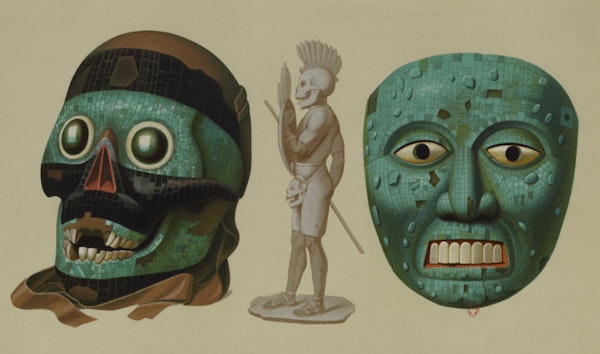
Brief Encounters with Jean-Frédéric Maximilien de Waldeck
Not a lot concerning the artist, erotic publisher, explorer, and general enigma Count de Waldeck can be taken at face value, and this certainly includes his fanciful representations of ancient Mesoamerican culture which — despite the exquisite brilliance of their execution — run wild with anatopistic elephants and suspicious architecture. Rhys Griffiths looks at the life and work of one of the 19th century’s most mysterious and eccentric figures. more
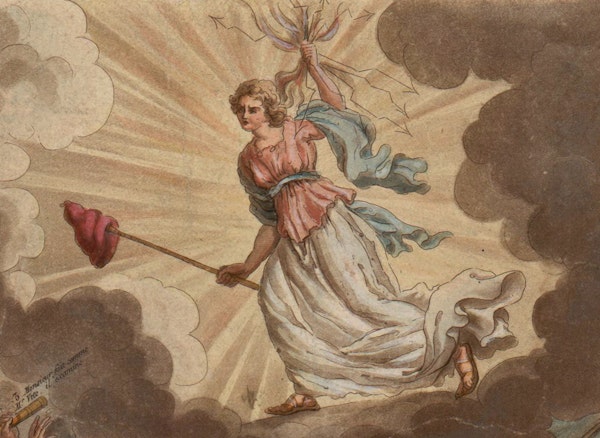
Flash Mob: Revolution, Lightning, and the People’s Will
Kevin Duong explores how leading French revolutionaries, in need of an image to represent the all important “will of the people”, turned to the thunderbolt — a natural symbol of power and illumination that also signalled the scientific ideals so key to their project. more
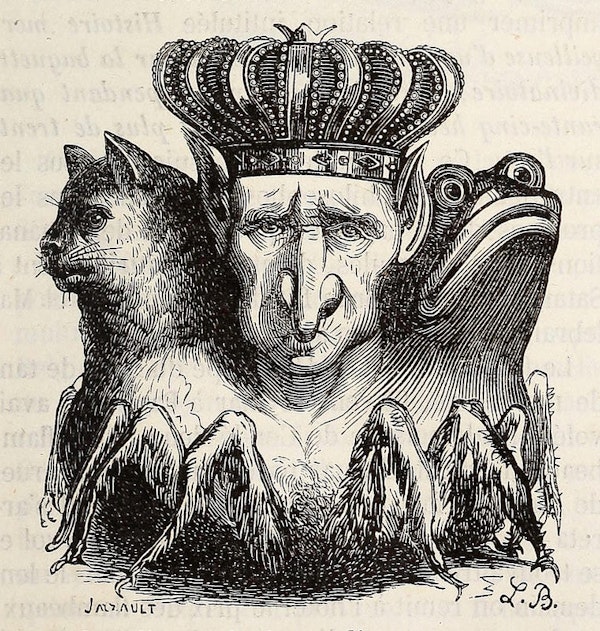
Although Jacques Collin de Plancy’s Dictionnaire infernal, a monumental compendium of all things diabolical, was first published in 1818 to much success, it is the fabulously illustrated final edition of 1863 which secured the book as a landmark in the study and representation of demons. Ed Simon explores the work and how at its heart lies an unlikely but pertinent synthesis of the Enlightenment and the occult. more
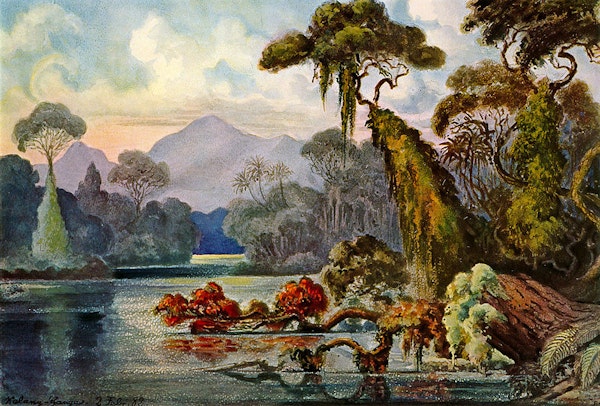
Human Forms in Nature: Ernst Haeckel’s Trip to South Asia and Its Aftermath
An early promoter and populariser of Darwin's evolutionary theory, the German biologist and artist Ernst Haeckel was a hugely influential figure of the late 19th century. Bernd Brunner looks at how a trip to Sri Lanka sowed the seeds for not only Haeckel's majestic illustrations from his Art Forms in Nature, for which he is perhaps best known today, but also his disturbing ideas on race and eugenics. more
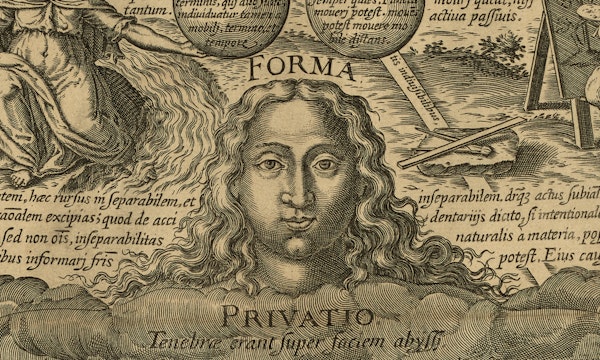
The Art of Philosophy: Visualising Aristotle in Early 17th-Century Paris
With their elaborate interplay of image and text, the several large-scale prints designed by the French friar Martin Meurisse to communicate Aristotelian thought are wonderfully impressive creations. Susanna Berger explores the function of these complex works, and how such visual commentaries not only served to express philosophical ideas in a novel way but also engendered their own unique mode of thinking. more
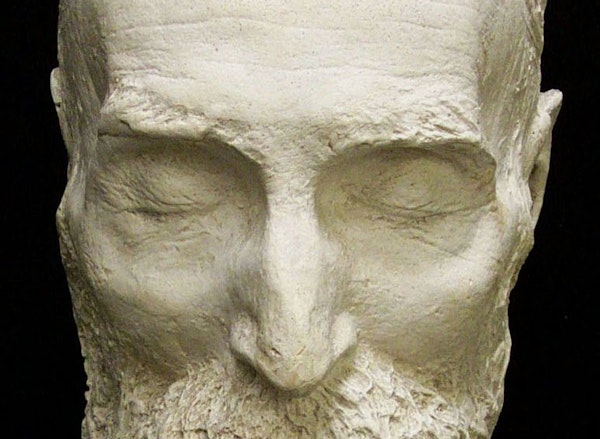
A Barthesian bristle and the curious power of Walt Whitman’s posthumous eyelids — D. Graham Burnett on meditations conjured by a visit to the death masks of the Laurence Hutton Collection. more
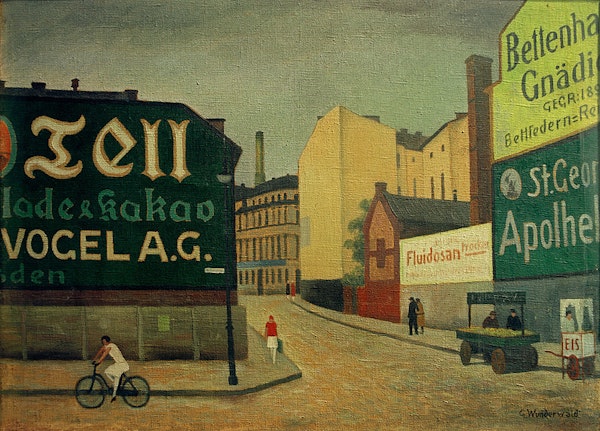
Gustav Wunderwald’s Paintings of Weimar Berlin
The Berlin of the 1920s is often associated with a certain image of excess and decadence, but it was a quite different side of the city — the sobriety and desolation of its industrial and working-class districts — which came to obsess the painter Gustav Wunderwald. Mark Hobbs explores. more
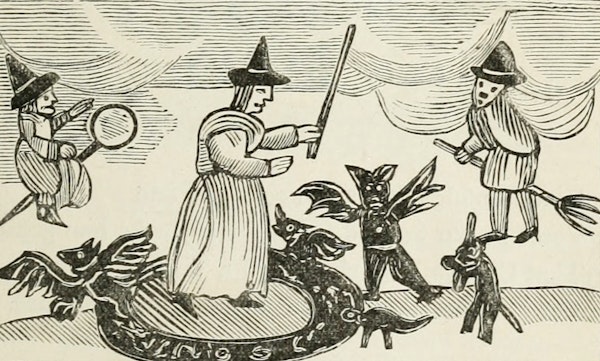
Jon Crabb on the witch craze of early modern Europe, and how the concurrent rise of the mass-produced woodcut helped forge the archetype of the broom-riding crone — complete with cauldron and cats — so familiar today. more
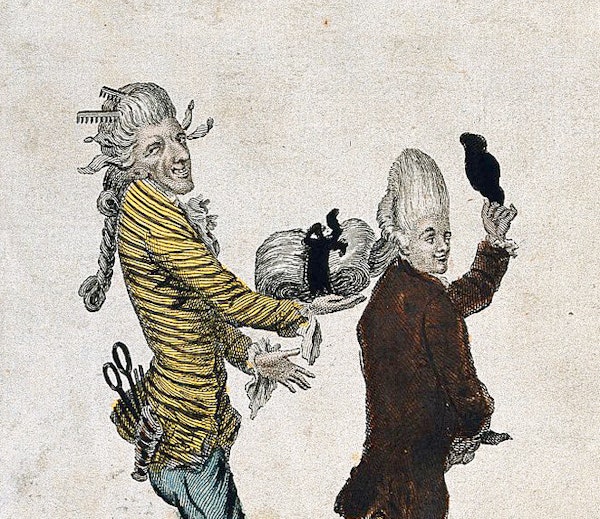
With his enormous hair, painted face, and dainty attire, the so-called "macaroni" was a common sight upon the streets and ridiculing prints of 1770s London. Dominic Janes explores how with this new figure — and the scandalous sodomy trials with which the stereotype became entwined — a widespread discussion of same-sex desire first entered the public realm, long before the days of Oscar Wilde. more
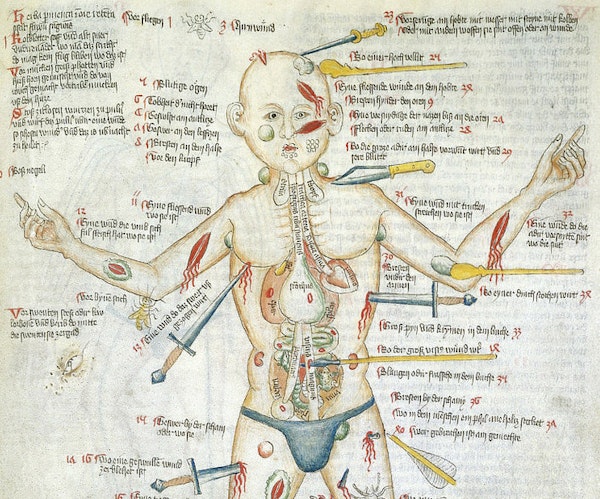
The Many Lives of the Medieval Wound Man
Sliced, stabbed, punctured, bleeding, harassed on all sides by various weaponry, the curious image of Wound Man is a rare yet intriguing presence in the world of medieval and early modern medical manuscripts. Jack Hartnell explores this enigmatic figure's journey through the centuries. more
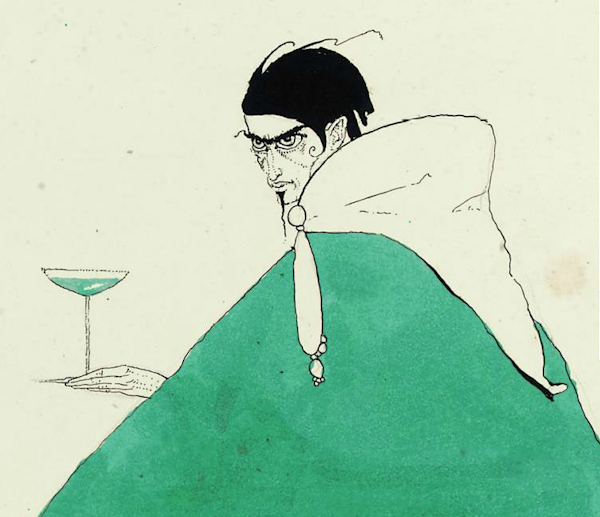
With their intricate line and often ghoulish tone, the works of Irish artist Harry Clarke are amongst the most striking in the history of illustration and stained glass design. Kelly Sullivan explores how, unknown to many at the time, Clarke took to including his own face in many of his pictures. more
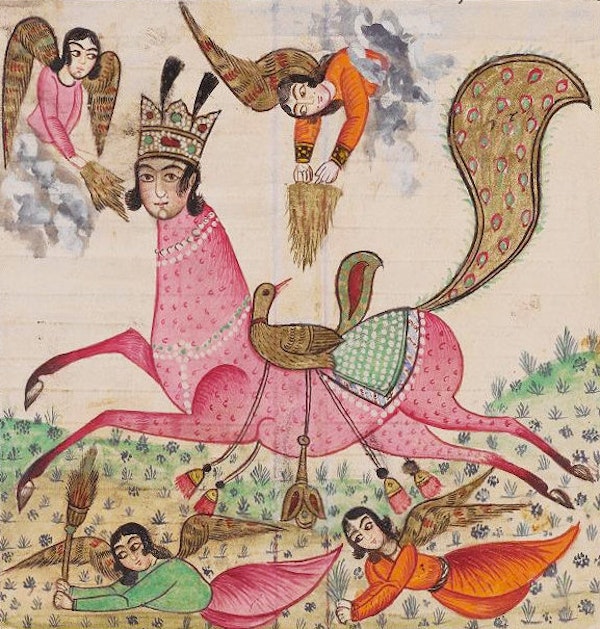
Out of Their Love They Made It: A Visual History of Buraq
Although mentioned only briefly in the Qur'an, the story of the Prophet Muhammad's night journey to heaven astride a winged horse called Buraq has long caught the imagination of artists. Yasmine Seale charts the many representations of this enigmatic steed, from early Islamic scripture to contemporary Delhi, and explores what such a figure can tell us about the nature of belief. more
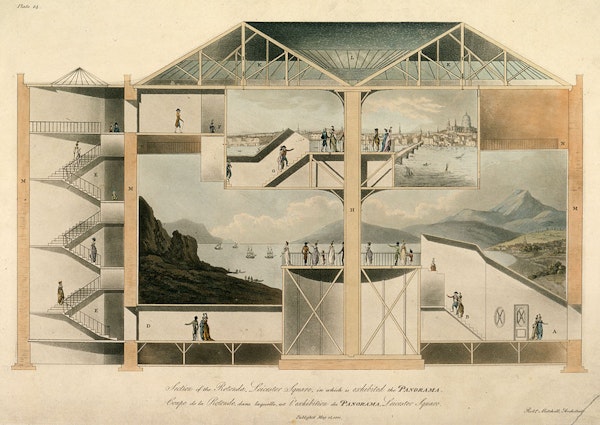
“Unlimiting the Bounds”: the Panorama and the Balloon View
The second essay in a two-part series in which Lily Ford explores how balloon flight transformed our ideas of landscape. Here she looks at the phenomenon of the panorama, and how its attempts at creating the immersive view were inextricably linked to the new visual experience opened up by the advent of ballooning. more
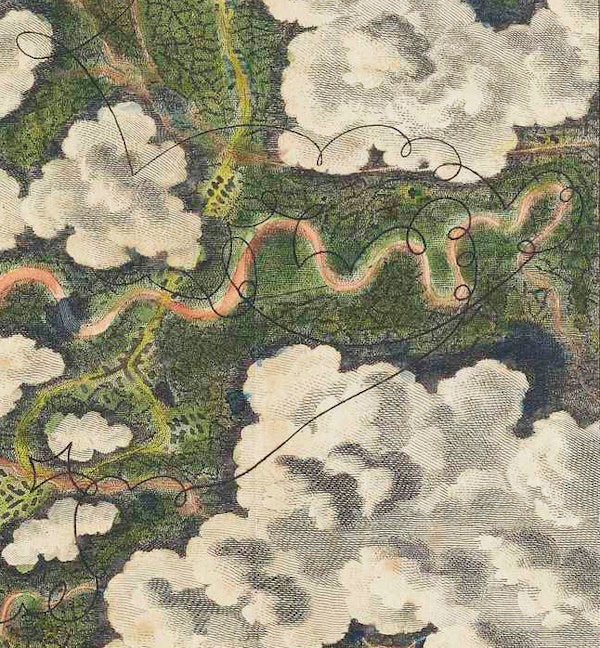
“For the Sake of the Prospect”: Experiencing the World from Above in the Late 18th Century
The first essay in a two-part series in which Lily Ford explores how balloon flight transformed our ideas of landscape. We begin with a look at the unique set of images included in Thomas Baldwin's Airopaidia (1786) — the first "real" overhead aerial views. more
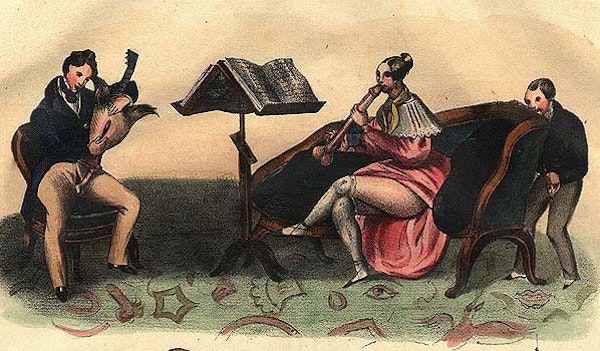
The Secret History of Holywell Street: Home to Victorian London’s Dirty Book Trade
Victorian sexuality is often considered synonymous with prudishness, conjuring images of covered-up piano legs and dark ankle-length skirts. Historian Matthew Green uncovers a quite different scene in the sordid story of Holywell St, 19th-century London's epicentre of erotica and smut. more
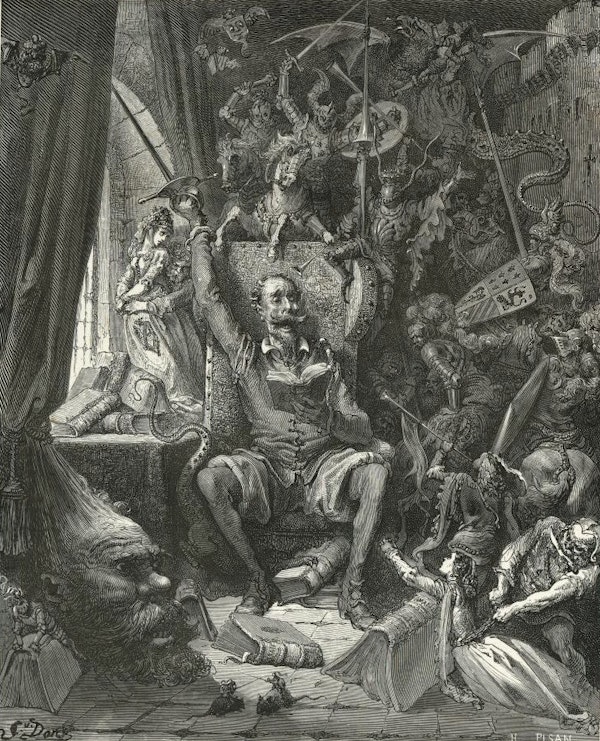
This year marks the 400th anniversary of the death of Miguel de Cervantes, author of one of the best-loved and most frequently illustrated books in the history of literature — Don Quixote. Rachel Schmidt explores how the varying approaches to illustrating the tale have reflected and impacted its reading through the centuries. more
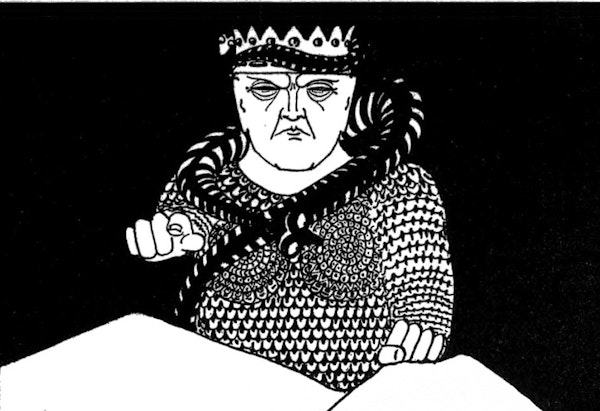
The Strange Case of Mr William T. Horton
Championed in his day by friend and fellow mystic W. B. Yeats, today the artist William T. Horton and his stark minimalistic creations are largely forgotten. Jon Crabb on a unique and unusual talent. more
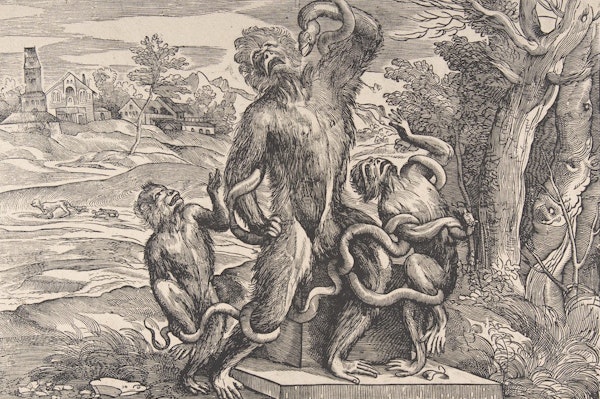
Who Says Michelangelo Was Right? Conflicting Visions of the Past in Early Modern Prints
When the lost classical sculpture Laocoön and His Sons — lauded as representing the very highest ideal of art — was dug up in 1506 with limbs missing, the authorities in Rome set about restoring it to how they imagined it once to look. Monique Webber explores how it was in reproductive prints that this vision was contested, offering a challenge to the mainstream interpretation of Antiquity. more
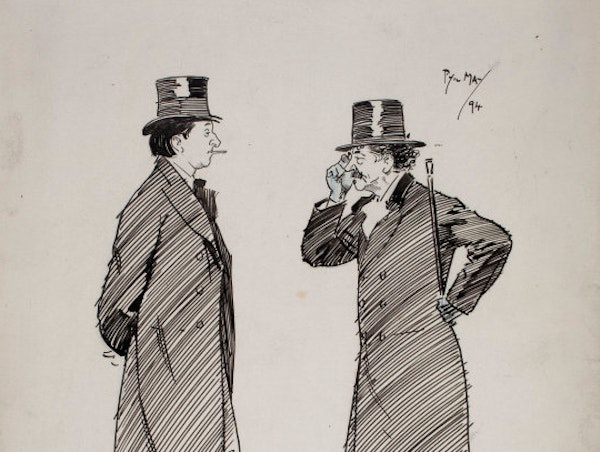
Celebrated for his innovative wit, Oscar Wilde and the notion of originality are common bedfellows. The pairing, however, is not without its complications. Joseph Bristow and Rebecca N. Mitchell explore the claims of plagiarism that dogged Wilde's career, particularly as regards his relationship with that other great figure of late-19th-century Decadence, the American painter James McNeill Whistler. more
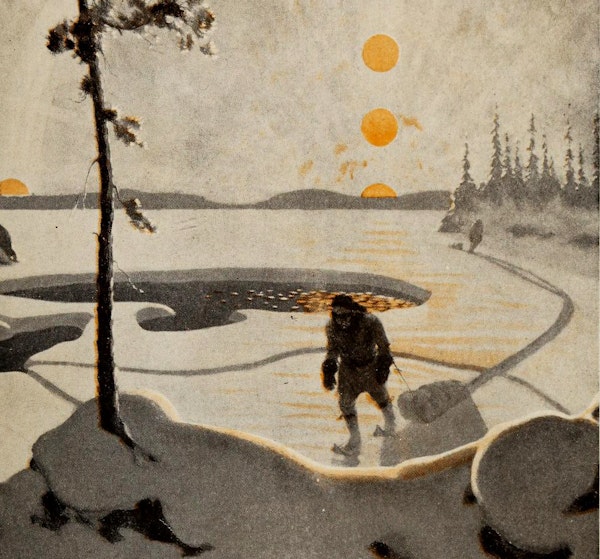
Tribal Life in Old Lyme: Canada’s Colorblind Chronicler and his Connecticut Exile
Abigail Walthausen explores the life and work of Arthur Heming, the Canadian painter who — having been diagnosed with colourblindness as a child — worked for most of his life in a distinctive palette of black, yellow, and white. more
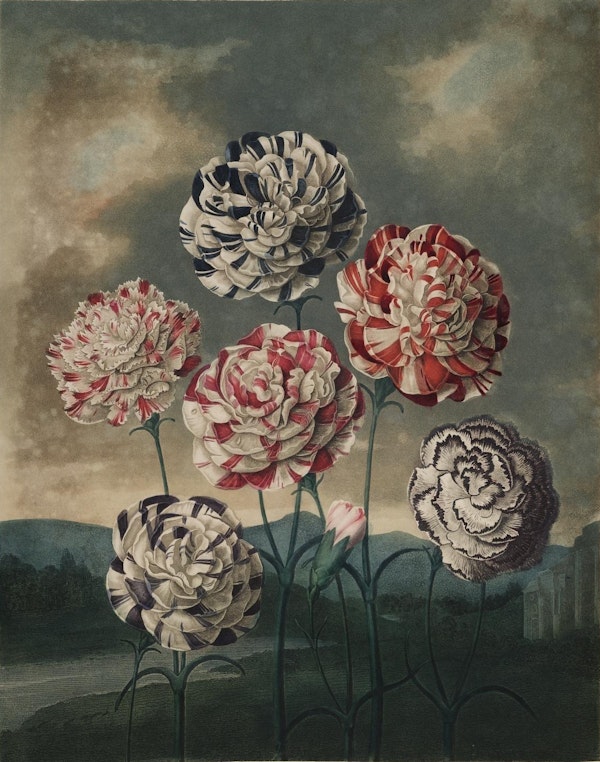
Sex and Science in Robert Thornton’s Temple of Flora
Bridal beds, blushing captives, and swollen trunks - Carl Linnaeus' taxonomy of plants heralded a whole new era in 18th-century Europe of plants being spoken of in sexualised terms. Martin Kemp explores* how this association between the floral and erotic reached its visual zenith in Robert Thornton's exquisitely illustrated Temple of Flora. more
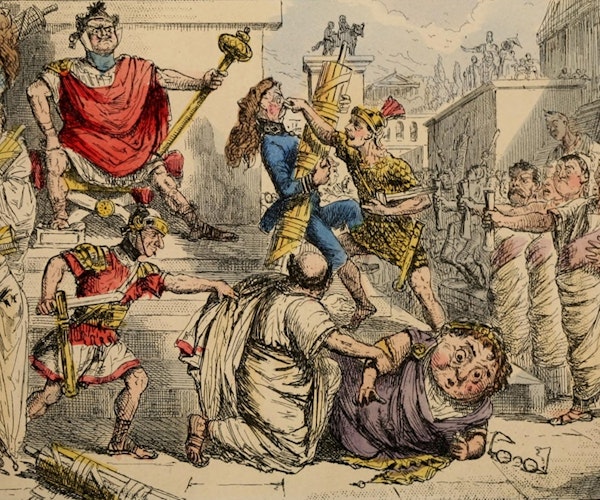
The Eternal Guffaw: John Leech and The Comic History of Rome
At the beginning of the 1850s, two stalwarts from the heart of London-based satirical magazine Punch, Gilbert Abbott à Beckett and John Leech, cast their mocking eye a little further back in time and published The Comic History of Rome. Caroline Wazer explores how it is not in the text but rather in Leech's delightfully anachronistic illustrations that the book's true subversion lies, offering as they do a critique of Victorian society itself. more
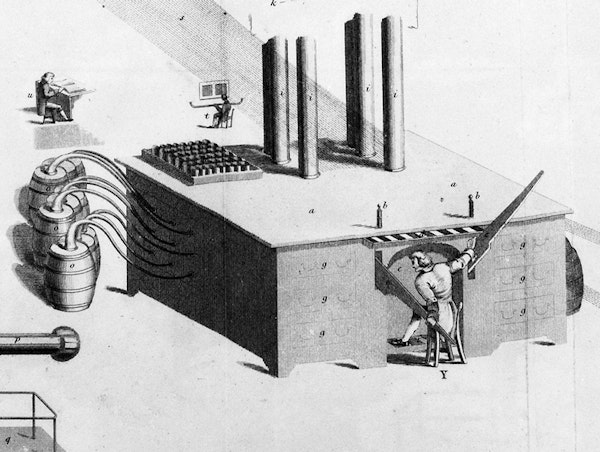
Illustrations of Madness: James Tilly Matthews and the Air Loom
Mike Jay recounts the tragic story of James Tilly Matthews, a former peace activist of the Napoleonic Wars who was confined to London's notorious Bedlam asylum in 1797 for believing that his mind was under the control of the “Air Loom” — a terrifying machine whose mesmeric rays and mysterious gases were brainwashing politicians and plunging Europe into revolution, terror, and war. more
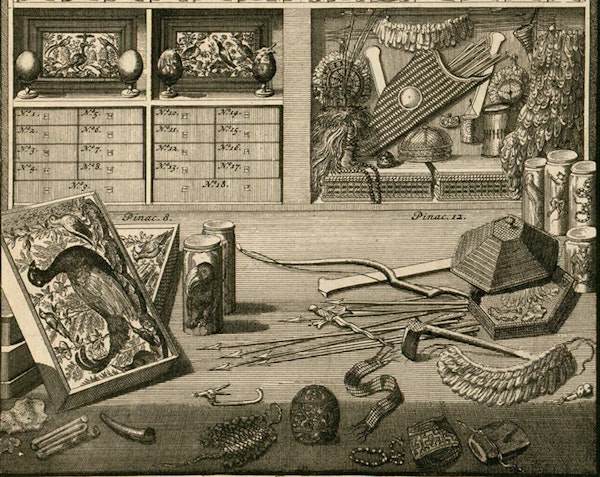
Redressing the Balance: Levinus Vincent’s Wonder Theatre of Nature
Bert van de Roemer explores the curiosity cabinet of the Dutch collector Levinus Vincent and how the aesthetic drive behind his meticulous ordering of the contents was in essence religious, an attempt to emphasise the wonder of God's creations by restoring the natural world to its prelapsarian harmony. more





